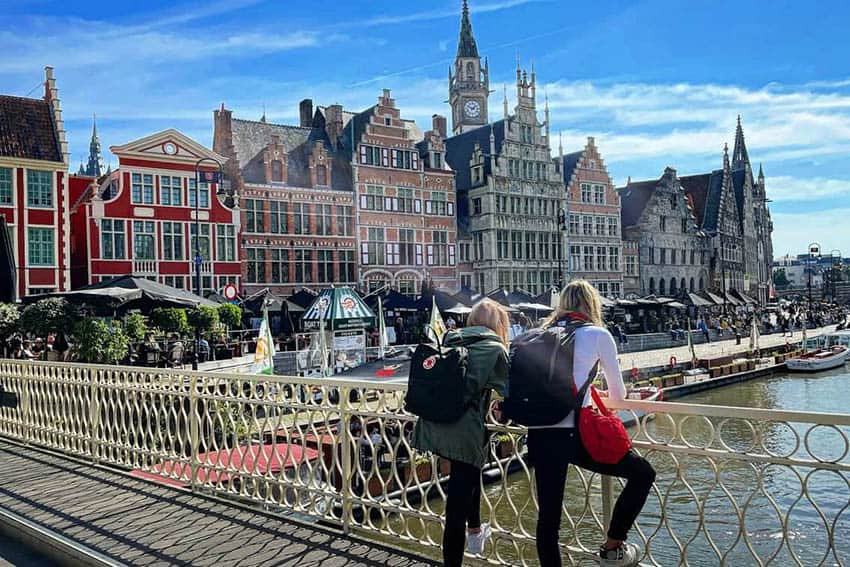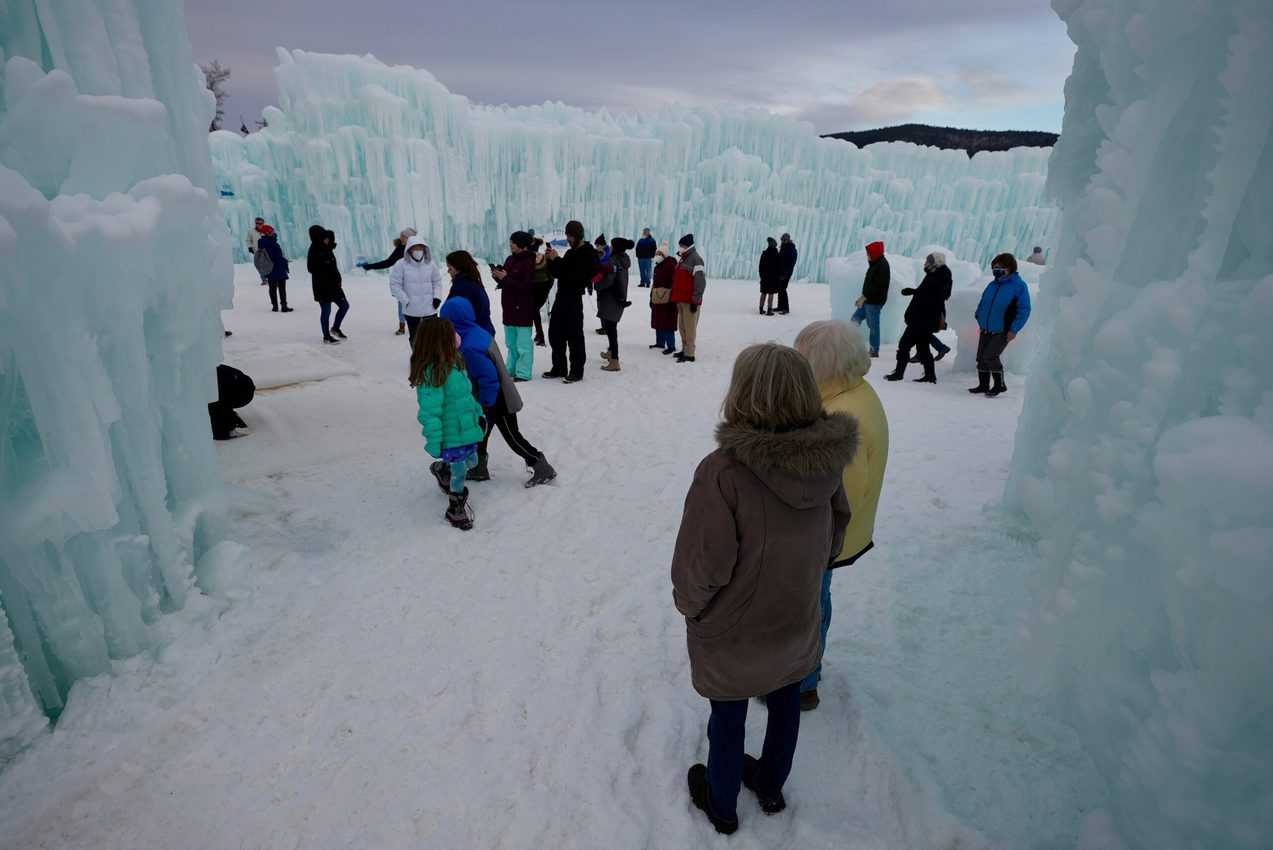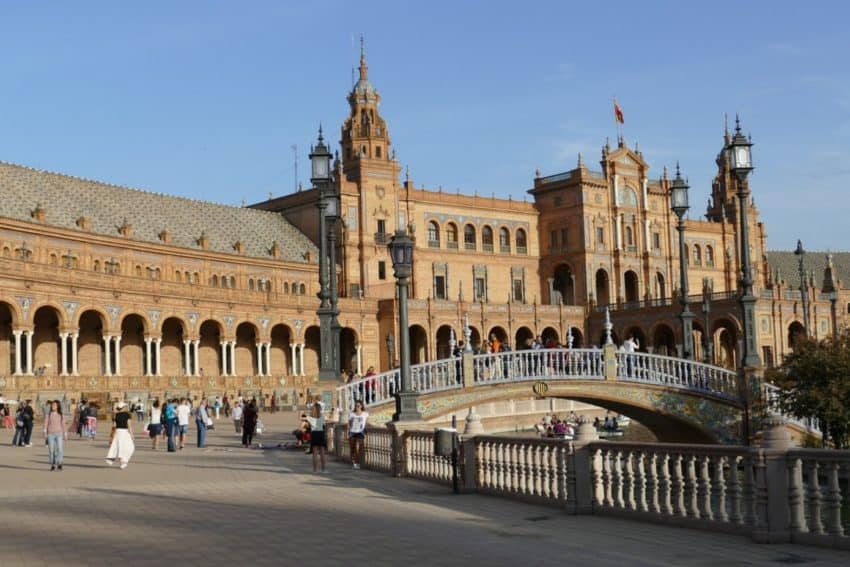
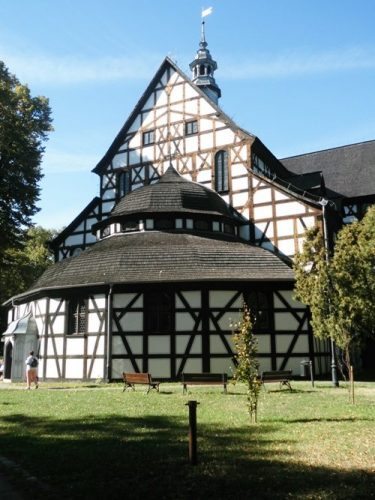
By Inka Piegsa Quischotte
Poland: Castles and the Gold Train
From the moment we stepped onto the bus, our tour guide in Poland was pelted by questions from my excited fellow travel journalists: “Where is the gold train? Can we see it? Have they confirmed yet what it contains? Have they actually FOUND it?”
Frankly, I didn’t have a clue what they were talking about, but, thank you internet, I found out quickly. We were on our way to the majestic 13th century Ksiaz castle in Walbrzych/Lower Silesia and here is the story.
The gold train of Walbrzych
Over the centuries, the castle which we were about to visit changed hands many times. In 1943, Nazi Germany started the Project Riese, which entailed the construction of seven underground structures below Ksias Castle and the Owl mountains as a secure headquarters for Hitler and his officials and probably also as a place for arms manufacturing.
The system comprises several tunnels and railway shafts, but none were completed because the Red Army occupied Ksiaz in 1945.
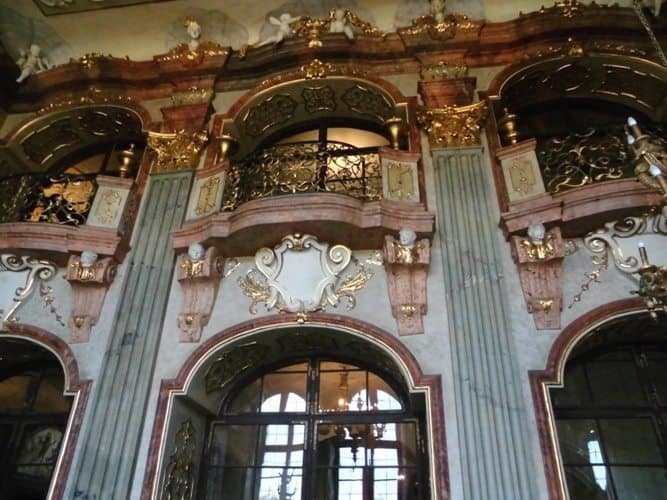
Since the 1970s, rumors have been flying around about a gold train, laden with 300 tons of gold, works of art, jewels and even parts of the Amber Chamber of Saint Petersburg, hidden in an underground shaft close to the castle.
This first wave of rumor already sparked the interest of amateur gold diggers, but it wasn’t until August of this year that two individuals, one German and one Polish by the names of Andreas Richter and Piotr Koper approached the Polish government with a view to negotiating a finder’s fee of 10% in exchange for revealing the exact location of the train which they claimed to have identified.
They supported their claim with radar images showing a railway shaft and, indeed, what could be a train in it.
Since then the gold train treasure hunt has taken momentum, bringing thousands of tourists and treasure hunters to the aera. As the major of Jaenia Gora, our next stop, said: “It doesn’t really matter whether or not they finally find the train or if it even has gold in it. To us, it’s worth pure gold already.
The media hype has produces such publicity, that our visitors number have doubled in just a few months and we are very happy whatever the outcome”.
At present, the densely wooded area is being cleared and carefully searched for landmines before the Polish Army can begin excavations in earnest.
Our beleaguered tour guide had to give in and take us on a little detour to drive over the bridge which crossed the goldtrain site and the adjacent railway tracks. Like everybody else, we hung out the window and gaped at….not very much, but at least we could all say: “we have been there and seen the site before the gold was resurrected. “ If ever, that is. The future will tell.
Kisaz Castle

After all that thrill, we were ready to visit the castle proper. Located on top of a hill and surrounded by a huge park, the castle in its present form is the work of the von Hochberg family who acquired it in 1605 and owned it until the Germans occupied it in 1941, beginning Operation Riese in 1943.
The super rich von Hochbergs added baroque extensions and converted the castle into a summer palace, with baths, terraces, ballrooms, extensive gardens, decorating itwith paintings and works of art.
A memorable personality is Duchess Daisy, the British wife of the last owner, Jan Henry XV, famous for her eccentricity, love of luxury and seven meter long string of perfectly matched pearls.
Much of the furniture and works of art were destroyed or stolen, but since the 1950s great restoration work has been undertaken to restore the castle to its former glory.
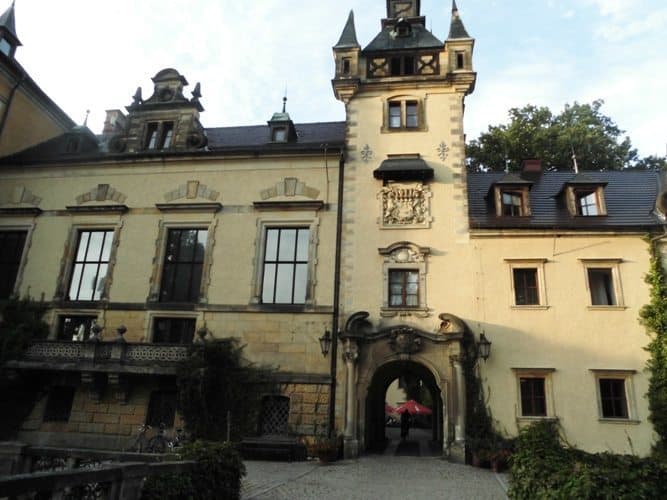
And then we descended into the nether world to wander along part of the vast tunnel system which runs under the castle. It’s chilling down there and one can’t but help thinking about the thousands of concentration camp inmates who were forced to do the work and lost their lives in the process.
With a sigh of relief we returned to the gardens and continued our tour of the Castles and Palaces of Lower Silesia with the next one, Kliczkow castle.
Kliczkow Castle
Kliczkow CastleIf the landscape was already delightful, arrival at the vast Neo Renaissance Castle was even more so. We were received in style by ladies in costume and a ‘medieval’ guide who told us about the castle’s history.
It’s amazing what changes and destructions this castle has gone through since it was first built in the 13th century. It belonged, among many others, to the Jesuits and even burnt down twice, but nevertheless, now stands in splendor again. In addition, it’s one of the best and most luxurious hotels in Lower Silesia.
I just loved the room keys, no swipe cards but heavy keys which evoke the castle atmosphere. The rooms are huge with period furniture, eiderdown pillows and duvets and an ample bathroom. Free WiFi, TV and all other amenities are provided to make your stay comfortable.
Before using the nice pool and wellness center, the surrounding woods and the moat invite to strolling. Early morning is best to contemplate the mist rising from the valleys of the mountains in the distance. It’s all just so romantic and relaxing and the food was excellent too.
A good night’s rest worked wonders to prepare us for the next stops on the Lower Silesia tour where there is so much to see you can easily spend a week driving around this part of Poland alone.
The Church of the Peace in Swidnica
The church is Europe’s largest timber framed religious building surrounded by woods and plenty of other greenery. It was built in 1657 after the Peace of Westphalia which ended the terrible Thirty Years War. The catholic Habsburg emperor granted the protestant population of Silesia the right to construct just three evangelic churches as a sign of tolerance.
However, conditions did apply. The church had to be erected within a time span of just one year. It could not have bells and had to be made from wood, loam and straw, strictly no other materials. It seems improbable, but the church of the peace in Wroclaw has withstood the centuries and stands today in singular magnificence.
It is, of course, entirely made from wood and there is not an inch within the church which is not lavishly decorated with carvings, paintings and gold, quite unusual for a protestant church which tend to be much more austere than their catholic counterparts. But, we are talking the Baroque period here, so it isn’t really such a big surprise.
You can spend quite some time in the church and still you won’t have seen all the incredible details. The church is huge, it can accommodate 7500 people and is a UNESCO World Heritage Site. The acoustics are amazing which make it the ideal venue for a Bach Festival each year in July. If you so wish, you can even arrange to listen to a concert played by the cantor at any other time.
From April until the end of October, the church is open to visitors from Monday to Saturday between 9am and 6pm, on Sundays from 11.30 and 6pm. Any other time of the year, you must make an appointment by email.
And then we continued on the Jelenia Gora at the foot of the Karkonsze Mountains.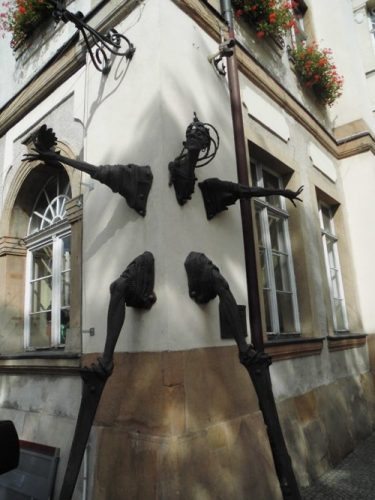 Stilt walker sculpture Jelenia Goar
Stilt walker sculpture Jelenia Goar
Hot springs and cut glass in Jelenia Gora
Jelenia Gora goes back to 1108 when Polish duke Boleslaus III founded a fortified settlement in a valley among the mountains. As legend has it, he followed a magnificent deer which stopped right at the place where he decided to create the settlement which why is why the animal figures in the coat of arms of the city and carved and sculpted into many walls of the historical buildings around the market square.
Our first stop was the 18th century town hall and the Castle Gate Tower which marks one end of the market square. Jelenia Gora is remarkable for four things: 1) bicycles including such events as the 5th World University Cycling Championship in 2014 and the yearly MTB Race of the Bike Parade. 2) hot thermal springs of the Cieplice Baths, 3) as the root of street theatre, as documented in the iron sculpture of a stilt walker, embedded in a wall of the Town Hall and lastly glass making and the fabulous Karkonsze Glass Museum.

The mountains are the seat of many legends, among them the one of the giant Ruebezahl and we were all delighted to see stalls along the street, selling carvings of the giant and his dwarf as well as cozy slippers and other cuddly things.
After a visit to the Basilca dedicated to San Pancras, we walked along Maja Street to the Orthodox church of the Apostles Peter and Paul which was originally a catholic chapel dedicated to the virgin Mary but was in 1948 given to the orthodox parish of Jelena Gora.
The church is usually closed, but the mayor summoned the orthodox priest, surprisingly attired in jeans and a shirt, his hair in a pony tail, who produced a huge iron key and opened up for us, telling us all about the history.
Lovers of art, beauty and craft are full rewarded by the Glass Museum which not only exhibits examples of glass making which is a tradition in Lower Silesia, but also cute reproductions of what a local farm house looks like and how people lived in the past centuries.
We were treated to an early lunch in the glass museum of and then proceeded to a relaxing afternoon in the famous spa and thermal baths of Cieplice.
This is a very modern complex with indoor and outdoor pools, saunas, steam room and even an ice room, health and beauty treatments, massages and a small café. In the summer this is the venue for rock concerts where the audience can sit and watch in thermal water.
The baths have been in operation since 1281 and the springs which reach a temperature of nearly 90o are still going strong.
Having had a good taste of the great variety of landscapes and things to do and see in Poland, I’m ready to visit a very different part, Sopot and the beaches of the Baltic Sea. However, this will have to wait until next summer.
- Cruising by Yacht to Indonesia’s Raja Ampat - April 2, 2019
- Bursa, Turkey – Travel Inspired by Two Famous Puppets - September 29, 2016
- Poland: Castles & a Gold Rush in Lower Selisia - May 30, 2016



